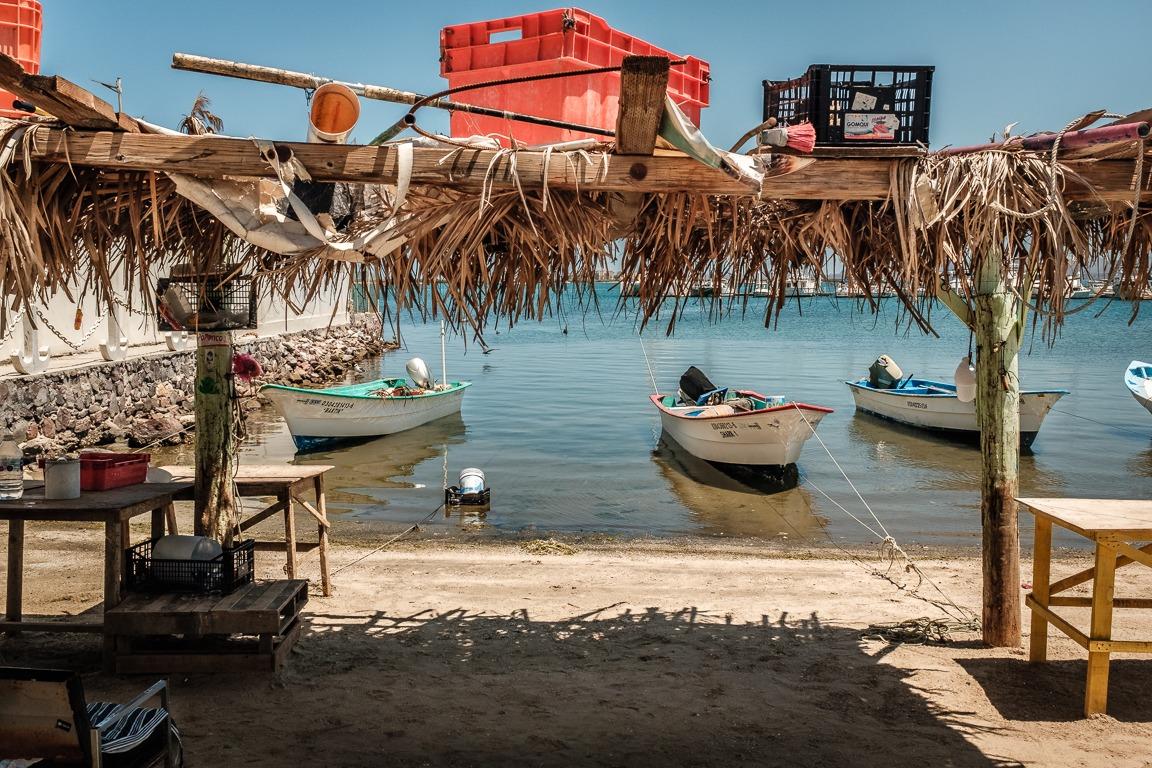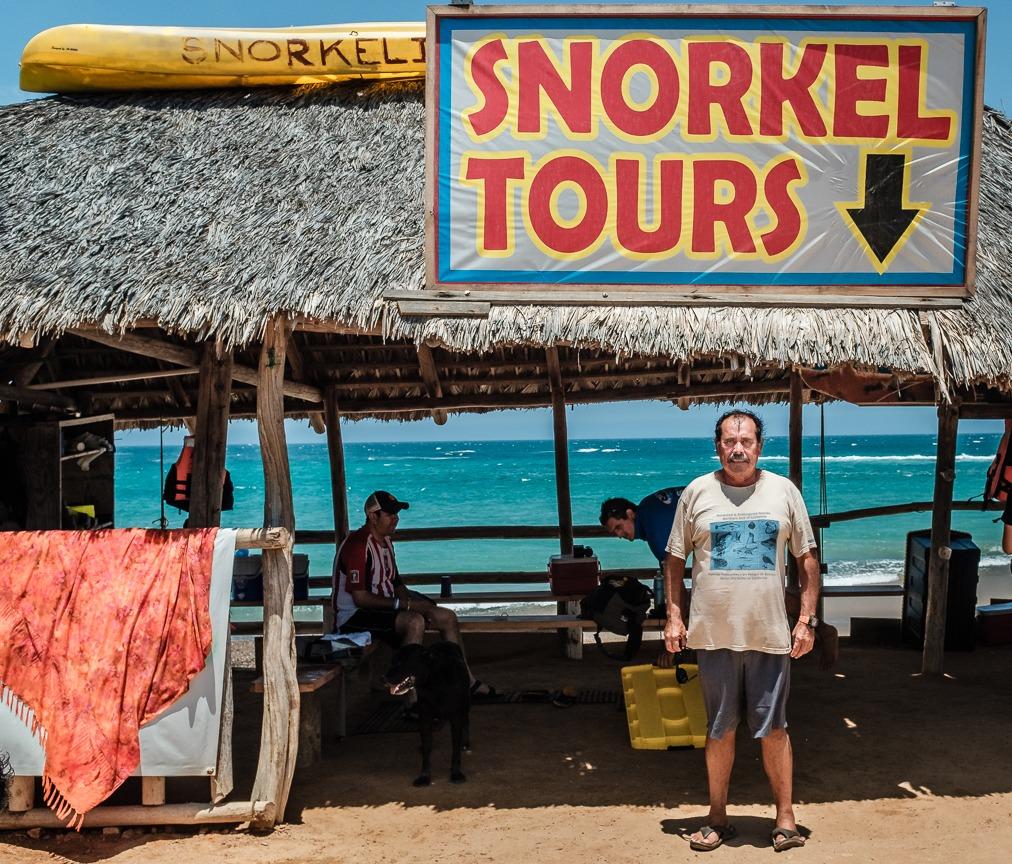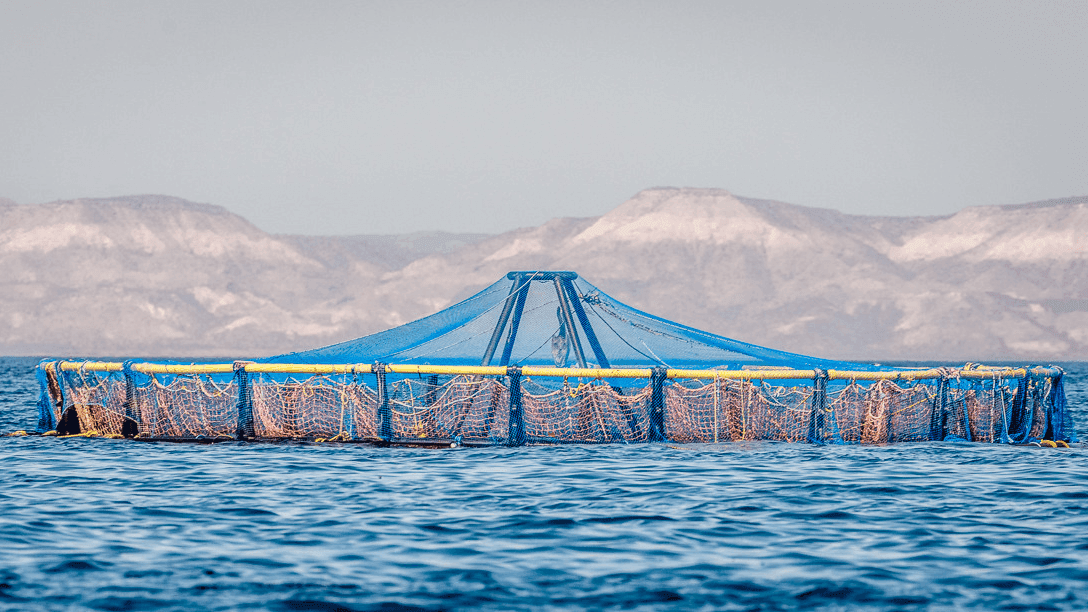With no-fishing zones, Mexican fishermen restored the marine ecosystem
In the Sea of Cortez, off the coast of La Paz, implementing no-fishing zones has helped the marine ecosystem recover. Now that the fish are back, many ex-fishermen have moved from fishing to guiding tourists on underwater expeditions.
The idea that the ocean can run out of fish might seem implausible. Yet if you ask Jesús Enrique León Lara, that’s exactly what has been happening over the last decade in his tiny patch of paradise, a village called Agua Verde in the Mexican state of Baja California Sur.
“We lived off what we caught, from what the ocean gave us,” León said. “There was so much fish, so many types of fish. But now it’s not like that. There’s a lot less fish.”
León comes from a long line of fishermen, stretching back at least to his great-grandparents. So do many of his neighbors. So when he and other fisherfolk in Agua Verde started coming in from a day’s fishing with very little, sometimes even nothing, worry spread in the community. Their livelihood was on the line.
It’s a problem facing small fishing communities worldwide — overfishing and other human impacts have led to days when no one catches anything. The seas off the Mexican coast of Baja California Sur — a big fishing area — have seen the fish population dwindle, according to Hudson Weaver, manager of the sustainable fisheries program at Baja’s Sociedad de Historia Natural Niparajá, a conservation nonprofit.
“There used to be a lot more fish in the water all over Baja California,” Weaver said.
Weaver, who has worked in Agua Verde for 12 years, said there are lots of reasons for that.
“[There are] the changes we’ve seen in a lot of the climate and the water temperatures,” Weaver said. “There’s natural changes like sardines that go through boom and bust cycles, and then there’s changes in the fisheries — so overfishing or fishing past the point of being able to replenish those fish in a yearly fashion.”
Fishing boats big and small came here from all over Mexico. And even the local fishermen themselves were just catching too many fish. All these things combined ultimately brought some fishing communities here to the breaking point.
It led Weaver and her colleagues at Niparajá to begin conversations with fishing families in Agua Verde about how to reverse the trend. And the conversations came to focus on one radical idea: Just stop fishing. At least for a while.
In Baja California Sur it’s known as zonas de refugio, or no-fishing zones. The idea is that if you stop fishing, the marine ecosystem — and the fish — might eventually be able to bounce back.

But it would also mean a big hit to local subsistence fishermen and their families. So could it work?
The experience of another community in the area suggests it can.
Cabo Pulmo, 250 miles south of Agua Verde, is so remote it’s off the state’s electricity grid. But it used to be a fishing paradise.
“It was full, full of sea bass and grouper,” says longtime fisherman Mario Castro, pointing to the sea around his boat, which is moored at a spot where he used to fish every day.
In classic fisherman style, Castro regales me with stories of the huge fish he used to catch. His face is weather-beaten but animated, and he’s totally at home on the sloppy ocean that roils the boat.
Some 25 years ago, he says, things began to change. Too often his fishing line would dangle the entire day without hooking a single fish.
So 20 years ago, Castro and his fellow fishermen took the radical step of turning almost the entire area into a no-fishing zone. And the results have been dramatic.
As we traverse the ocean around Cabo Pulmo where no one has fished in 20 years, Castro points out a sea turtle, part of a thriving marine community. Castro said locals are seeing wildlife here that even some of his old uncles don’t ever remember seeing.
After two decades of not fishing at all, he says, the ocean here is full of fish.
Octavio Aburto backs up what the local residents are seeing. He’s a marine biologist who has been studying Cabo Pulmo for all those years, and he says this little patch of ocean has become a case study in underwater regeneration.
“The corals are growing faster and better. Why? Because they are healthier,” Aburto said.
The corals are the feeding ground for the littlest fish. And those now have a chance to grow into food for the big predators likes sharks, which Aburto says are also back. Altogether, he says, the fishing ban has helped restore a thriving ocean ecosystem.
“When you have a community that has all the elements for that community — like big predators, herbivores, corals, sea fans, octopuses — when you have everything there, the community is stronger and each of the species with the community they can be more productive,” he said.
Aburto was part of a group of scientists at the University of Baja California Sur who worked on setting up the no-fishing zone. They even petitioned the Mexican government to have the area declared a national park.
Mario Castro, the former fisherman, worked with the scientists and ultimately became the local leader in the effort.
It was no easy task. It meant suspending a way of life that was generations old and convincing all the fisherman to put the prospect of long-term stability ahead of short-term economic loss.
But he managed to convince his old uncles and father and brother, all the fishermen in the village, to give it a go.
Before long, Castro says, they watched beautiful fish begin to return. But they resisted temptation and stuck with the no-fishing plan, leaving just one tiny sliver of the ocean open for daily consumption. Instead, to fill the gap, they decided to try to make Cabo Pulmo into a destination for diving and snorkeling. Fishermen would become guides. Castro was one of the first to get certified.
And word slowly spread about the exotic marine life at Cabo Pulmo. Tourists began coming, despite the bumpy, dirt road access to the town and the lack of regular electricity.
At first, it was only a trickle, maybe one tourist a week. “It was 10 years of suffering,” Castro said.

But 20 years later, Cabo Pulmo is a hot place for divers. Castro’s family runs two snorkel and dive tour companies and they take out multiple boats a day full of tourists. Showing off their underwater wonders has become such a thriving business that the Castros and other former fisherfolk ultimately decided not to go back to fishing at all. They see their future in dive tourism.
And the town’s experiment may be an example to other communities in the region.
José Flores lives in La Paz, about 90 miles up the Baja coast from Cabo Pulmo, where he is the head of a fishing cooperative. He grew up fishing for what his family ate every day. But here, too, the fish started to run out.
When Flores heard about no-fishing zones, the idea seemed risky. But he also saw that it seemed to be working in other places. So he joined an effort to help establish one in La Paz. It was a tough sell, as it had been in Cabo Pulmo. But Flores says it’s working here too.
“The whole area has improved and the richness of the ocean life returned,” Flores said.
Still, he said it has been challenging to make sure that everyone respects the boundaries, especially people from out of town. Locals have had to work with the government to enforce the restrictions.
It’s a set of challenges the conservation group Niparajá has seen up and down the Baja coast. But as in Cabo Pulmo, part of the solution has been diving, although not for recreation and tourism.
On a recent July morning, young people from the remote community of Agua Verde, where Jesús León Lara lives and which also established its own small no-fishing zone, were in La Paz for a week-long dive training run by Niparajá. The participants were learning how to patrol their no-fishing zone back home and monitor changes in the abundance of fish to help determine whether their experiment is actually working.
Ultimately, the data could help make the case for expanding the protected zone. Initial results indicate the fish are coming back to Agua Verde.
And Jesús León Lara is relieved.
“There’s no other way,” León said. Unlike Cabo Pulmo, his part of Baja is just too remote to attract many tourists. So if his community is going to survive, it really needs the fish to come back.
Our coverage reaches millions each week, but only a small fraction of listeners contribute to sustain our program. We still need 224 more people to donate $100 or $10/monthly to unlock our $67,000 match. Will you help us get there today?
